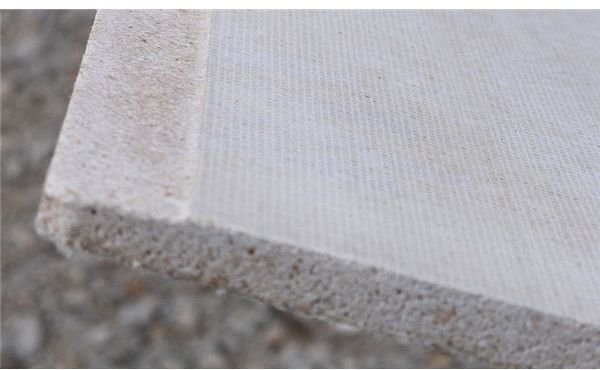Green Alternatives to Gypsum Wallboard Have Become Feasible
Gypsum Wallboard Is an Eco Unfriendly Material
Figures obtained from the National Energy Laboratory (NERL) U.S. Life Cycle Inventory Database report the number of BTUs expended per pound to manufacture gypsum board as 8196. This is taking into account only the natural gas that is used during the drying process of the manufacturing cycle. Besides this, gypsum causes a series of chemical and biological reactions when it is disposed of in landfills.
Gypsum partly dissolves in water. Then the leachate reaches ground water and increases the sulfate content, making the water unfit for drinking. It can also lead to odors caused by the H2S that is formed from the dissolved sulfate.
Green alternatives to gypsum wallboard have therefore become imperative. Fortunately scientists have found a number of alternatives that can act as effective substitutes. These materials consume less energy during manufacture, can be disposed of in landfills, and also have the added advantage of lighter weight, saving some of the energy used during transportation, which can further reduce the carbon footprint and make the alternative that much greener.
Image Source: wikipedia: MGO Board
Wallboard from Agricultural By-Products
One of the most eco-friendly substitutes for gypsum is the use of agricultural by-products. Production processes that are proprietary are used to apply high heat and pressures to straw and other farming by-products. This heat and pressure causes the material to give up some of its resins that then act as a bonding agent between the fibers of the base material. This bonded material is then extruded in a dry form and coated on both sides with paperboard that has wet strength. The glue that is used to bond the paperboard to the extruded core is non-toxic, and no other preservatives or other additives are added. The entire process requires just 4 percent of the energy required to manufacture conventional gypsum board. The strength of such boards is also much higher than that of normal gypsum wallboard because of the fibrous bonded content of the core.
Other Green Alternatives
By making adjustments to the manufacturing it is possible to create more eco-friendly alternatives. For example, the oven cooking process that accounts for most of the energy use in the manufacture of gypsum wallboard can be bypassed by using a process that involves ingredients like kiln dust, slag, fly ash, and some filler. These are all mixed with water to form a compound that has the consistency of paste. The paste is poured out into forms of the required sizes and then the compound is allowed to dry. The resultant board is considered to be completely resistant to mold and termites. It also generates less dust than drywall during installation. This efficient material can be completely recycled to manufacture the same board when it is discarded. It is also not a problem if disposed of in landfills.
Other green alternatives to gypsum wallboard use magnesium oxide and chloride in a cold pressing process that saves energy. Such board has a 4 hour fire rating and can be submerged in water. It allows paint on one face and is rough on the other to allow for tiling. The boards are said to be silica and asbestos free making them safe for use.
Like many environmentally-friendly alternatives in green construction, finding creative, green substitutes for gypsum wallboard is beneficial for the environment, but also for the people using and purchasing the more efficient product.
